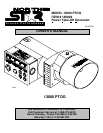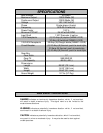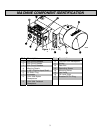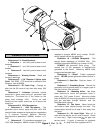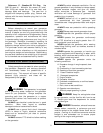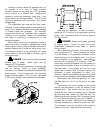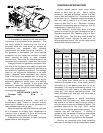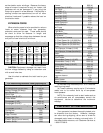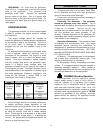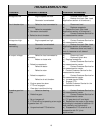
7
LOAD APPLICATION
It is important to determine the total electrical
load before it is connected to the generator. The
two major factors in determining the life of a
generator head are: heat build up, caused by
overloading the generator and corrosive
contaminants, that attack the wiring insulation. If
the generator is overloaded, the wires become
excessively hot and cause the insulation to break
down, reducing its ability to resist corrosive
contaminants. Over time the effectiveness of the
insulation is eliminated and a dead short can result.
Always compare the generator nameplate data
with that of the equipment to be used to ensure that
watts, volts, amperage, and frequency requirements
are suitable for operating equipment. The wattage
listed on the equipment nameplate is its rated
output. However, some equipment may require
three to ten times more wattage than its rating on
the nameplate, as the wattage is influenced by the
equipment efficiency, power factor and starting
system. NOTE: If wattage is not given on
equipment nameplate, approximate wattage may
be determined by multiplying nameplate voltage
by nameplate amperage.
VOLTS X AMPS = WATTS
Example: 120V X 5A =
600W
When connecting a resistive load such as
incandescent lights, heaters or common electric
power tools, a capacity of up to the generator full
rated wattage output can be used.
When connecting a resistive-inductive load such
as a fluorescent or mercury light, transformers or
inductive coils, a capacity of up to 0.6 times the
generator’s full rated output can be used.
Always allow the generator to reach operating
speed before a load is applied.
STARTING ELECTRIC MOTORS
Electric motors require much more current
(amps) to start than to run. Some motors,
particularly low cost split-phase motors, are very
hard to start and require 5 to 7 times more current
to start than to run. Capacitor motors are easier to
start and usually require 2 to 4 times as much
current to start than to run. Repulsion Induction
motors are the easiest to start and require 1.5 to 2.5
times as much to start than to run.
Most fractional motors take about the same
amount of current to run them whether they are of
Repulsion-Induction (RI), Capacitor (Cap), or Split-
Phase (SP) type. The following chart shows the
approximate current required to start and run
various types and sizes of 120 volt 60 cycle electric
motors under various conditions.
120V, 60 Hz
Motors
Starting Amps
Hp motor Running
Watts
RI type Cap
type
SP
type
1/6 525 7-11 9-18 16-22
1/4 700 9-15 12-23 22-32
1/3 875 11-18 14-29 26-35
1/2 1175 15-25 20-40 NA
1 1925 24-40 32-64 NA
1 1/2 2400 30-50 40-80 NA
2 2900 36-60 48-96 NA
3 4075 51-85 68-136 NA
5 6750 84-140 112-224 NA
The figures given above are for an average
load such as a blower or fan. If the electric motor is
connected to a hard starting load such as an air
compressor, it will require more starting current. If it
is connected to a light load or no load such as a
power saw, it will require less starting current. The
exact requirement will also vary with the brand or
design of the motor.
Generators respond to severe overloading
differently than the power line. When overloaded,
the engine is not able to supply enough power to
bring the electric motor up to operating speed. The
generator responds to the high initial starting
current, but the engine speed drops sharply. The
overload may stall the engine. If allowed to
operate at very low speeds, the electric motor starter
winding will burn out in a short time. The
generator head winding might also be damaged.
Running the generator under these conditions
may result in damage to the generator stator as well
00402



